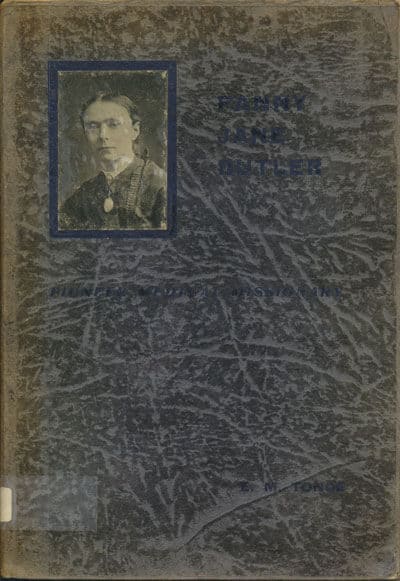Fanny Jane Butler – Pioneer Medical Missionary to India
 Dr Fanny Jane Butler was, according to Wikipedia,
Dr Fanny Jane Butler was, according to Wikipedia,
…among the first female doctors to travel to India and the first fully trained doctor from England to do so. Prior to her work in Kashmir and other parts of India, Butler was a part of the first class of the London School of Medicine for Women, becoming a member of the forefront of female doctors. Butler spent seven years in India until her death in 1889 and opened medical dispensaries in Srinagar and Bhagalpur, where no medical facilities had previously existed. Butler also initiated the building of the first hospital in Srinagar in 1888 called the John Bishop Memorial Hospital and provided necessary medical care for Indian women, for whom little care had been available.
Thanks to the kind permission of the Church Mission Society I am able to make available one of the standard biographies of this remarkable lady – kindly provided by Redcliffe College. This book is copyright Church Mission Society.
E.M. Tonge, Fanny Jane Butler, Pioneer Medical Missionary. London: Church of England Zenana Missionary Society, 1930. Pbk. pp.54. [Click to download complete book in PDF]
Contents
- Foreword (Contributed)
- Prologue
- By the Thames
- “Not Disobedient to the Heavenly Vision”
- Student Days
- Buying Experience
- By the Ganges
- Off the Beaten Track
- A Lover of Children
- A Stenuous Furlough
- By the Jhelum
- Overwhelming Opportunities
- The Last Journey Down the River
- Epilogue (Contributed)
Foreword
It is a real honour and pleasure to contribute a brief Foreword to this most interesting sketch by E. M. Tonge of the Life and Work of the late Dr. Fanny Butler.
The whole story reads as might the life of some mediaeval saint, one of the men and women who had so dedicated themselves, their powers, and their lives to Christ’s service that they could say: “it is not I who live, but Christ Who liveth in me.”
It is perhaps an advantage that the sketch presented for the help and encouragement of a later generation of women doctors should be so restrained and so shortened. These are busy days, and it is probable that the little, unassuming” life” of a devoted woman who was at once both saint and heroine should have been cast into a form that will make but little demand on the time, but ought to make great demands on the development of her successors. [Continue reading]
